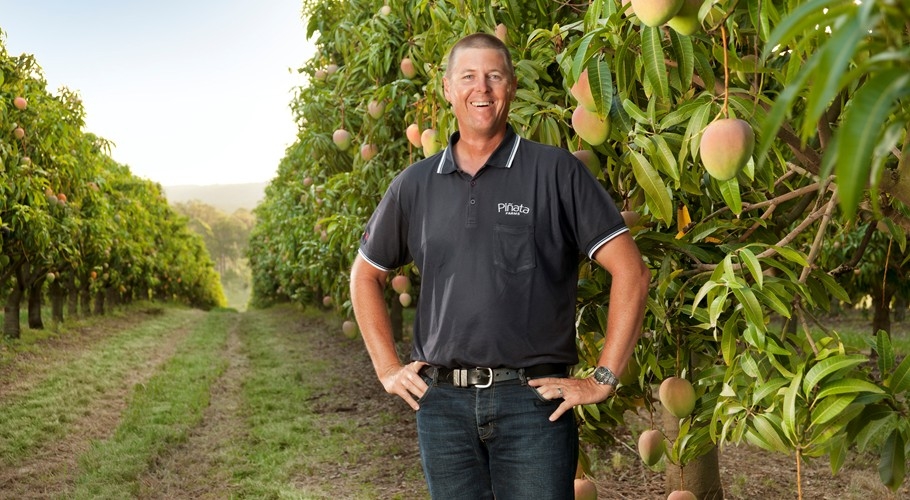Piñata Farms – Australia's only producer of specialty Honey Gold mangoes – has begun picking the first of this season's crop in the Northern Territory amid early predictions of a bumper crop.

Managing director, Gavin Scurr, said all indications pointed to a crop volume consistent with last season's record output, up more than 30 per cent on previous average production years. This was despite very different lead-in conditions for Australian mango production, he said.
Piñata Farms and some 40 third-party growers produce Honey Gold mangoes exclusively in five states between November and March. In total, approximately 150,000 Honey Gold mango trees are under cultivation on some 700 hectares.
Night picking – introduced last season as a trial to keep fruit fresh and blemish-free – is underway at Katherine in the Northern Territory, having proved a success. The first fruit of the season has already arrived on some supermarket shelves and will be available nationally from November 25.
Harvesting will next move to Mataranka in the Top End before progressing southwards into Queensland, New South Wales, Victoria and west to Western Australia by the end of March.
A consistent variety achieving solid outcomes
Mr Scurr, who is also chairman of the Australian Mango Industry Association (AMIA), said as a consistent crop, Honey Gold mangoes were largely unaffected by flowering issues which had hampered other varieties, such as Kensington Pride, this season.
"Kensington Pride can be an inconsistent variety and this season, is expected to produce about a third less than usual due to reduced flowering," he said.
"A small percentage of the Honey Gold crop – from Bundaberg, Queensland to Coffs Harbour, New South Wales will produce about half of its usual volume, also due to poor flowering. However, the bulk of the crop in other regions is steady and expected to make up for any shortfall in that region," Mr Scurr said.
He said lead-in conditions to this year's Australian mango season had varied markedly from the previous season.
"Winter in the growing regions was colder than usual, southern Queensland had a cold snap, with snowing at Stanthorpe and none of the regions experienced a spring as hot as last season's. There was also some early flowering in some varieties, resulting in early fruit."
Queensland a top producer
Mr Scurr said the bulk of Australia's Honey Gold crop would again come from Queensland, the largest growing region. Picking begins at third-party farms in Bowen and Mareeba in mid-December and continues for about six weeks. The Wamuran home farm in south-east Queensland will produce fruit for about four weeks from early January.
A small volume of Honey Gold mangoes would be exported to the United States for the first time, following the establishment of the Australian mango protocol. Fruit would be shipped to Los Angeles for national distribution. Other export markets included New Zealand and Singapore, he said.
About 5000 trees have been planted on third-party farms in the Mareeba, north Queensland area, since last season for production in about three years.
Piñata Farms positioned its distinctly sweet Honey Gold mangoes among Australia's top four premium mango lines after achieving a record crop last season.
Honey Gold mangoes are available at leading supermarkets and independent retail outlets nationally.
